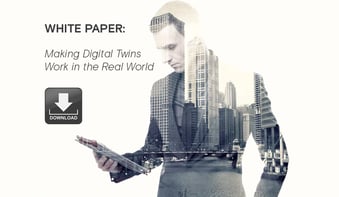We find ourselves in very uncertain times. The COVID-19 pandemic has forced all of us to abruptly change our daily routines. As the situation keeps evolving, I can’t help but wonder how COVID-19 will change the way we work in the future?
Working in the tech industry has certainly helped me to make the change from commuting to the office to working from home pretty smooth, as our organisation already had strategies in place to allow employees to work from home. But for many employers and employees, this change will drastically disrupt the way they do things, not only in the present, but also in how they prepare for the future.
Organizations are however used to facing seasonal disruptions. According to a recent Gartner report, “the seasonal influenza cost businesses $21 billion in lost productivity in 2018 — not to mention the inconvenience to workers (and sometimes severe health impacts).”
The big difference is that unlike the seasonal flu, pandemics can disrupt global business operations for much longer periods of time and organisations need to plan ahead now to avoid any further disruptions. But what can they do? What tools and technologies will enable organizations to future proof their existing workplace experience and extend that experience to those working remotely?
Let’s look at the in-office experience first. Changing the way we interact with office buildings is a top priority. There are a wide variety of technologies that enable a “contactless” office, for example:
- Using your mobile phone for HID access control.
- Using RTLS technology, so doors open up and lights can turn on automatically as you are moving around the office.
- Having access to comfort control settings such as lighting and temperature controls on your mobile phone.
- The use of AI and ML to automatically adjust comfort settings to individual preferences.
Extending this type of in-office experience to remote employees will be essential for organizations looking to attract and retain the best talent, as well as fostering their company culture. Here are a few things that could help:
- Enabling easy space booking for when remote employees need to come into the office.
- Having access to 3D maps and wayfinding when visiting the office.
- Using digital collaboration tools like Slack and Zoom to keep communication between remote and in-office employees disruption-free.
Remote working has been on the rise for the last few years and is likely to become even more mainstream as we deal with the fall out from COVID-19. The current climate we find ourselves in, should serve as a wake-up call for organizations that focus on daily operational needs at the expense of investing in digital technologies and long-term resilience. Organizations that are able to act swiftly and reevaluate their priorities and technology investment will be in a much better position for future stability.
The lessons learned from dealing with this crisis will be extremely valuable to ensure that organizations have the right strategies in place, to have a workforce that is equipped to deal with any challenge. Future proofing your organization will mean future proofing your building infrastructure, investing in data analytics, and putting people at the center of your strategy.
As an organization that serves many industries such as healthcare, commercial real estate, and corporate real estate organizations, we empathize deeply with what our customers are going through at this moment. We’re a technology organization, but for us people have always come first. If you need advice on where to start or how you can make the changes your organization needs to be prepared for the future, get in touch. Community is important now more than ever.





